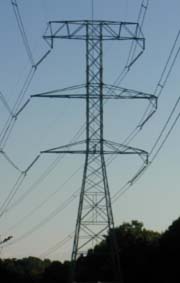Fiber
To The Home Today's Needs
FTTH-
FTTC- Fiber To The Home- Fiber To The Curb
Today's
Needs-Meeting
Today's Needs and Anticipating the Future
Fiber
to the Hone or FTTH - enables service providers to offer a variety of communications
and entertainment services, including carrier-class telephony, high-speed Internet
access, broadcast cable television, direct broadcast satellite (DBS) television,
and interactive, two-way video-based services. All of these services are provided
over a passive optical distribution network via a single optical fiber to the
home. In addition, an FTTH solution based on wavelength division multiplexing
(WDM), or a FTTH-based architecture, allows for additional flexibility and adaptability
to support future services.
 For The
Latest FTTH News!- Click Here
For The
Latest FTTH News!- Click Here
The full-service access network
(FSAN) initiative, whose objective is to obtain cost-effective solutions to accelerate
the introduction of broadband services into the public network, is also testing
asynchronous transfer mode (ATM)-passive optical network (PON) technology for
FTTH, which transports network services in ATM cells on a PON. This mode of transport
provides key service features, such as multiple quality-of-service (QoS) guarantees,
which enables the successful transmission of integrated voice, video, and data
services by prioritizing traffic. It also permits statistical multiplexing for
bursty traffic, such as Internet access and data transfers.

Fiber-based
networks in general evolved in response to consumer demand for a vast assortment
of multimedia services and applications. In order to meet this demand, service
providers need a robust, broadband networking solution such as fiber technology,
which offers unlimited bandwidth and the flexibility to meet customer demand for
two-way, interactive, video-based services.
Today
it seems that everyone wants high-speed data, dependable voice service, and high-quality
video. Whether these services are delivered by digital subscriber line (DSL),
cable modems, or wireless architectures is insignificant as long as the service
is fast and dependable.
Providing these services,
however, presents a number of challenges, including how to get lines out to each
customer and how to future-proof the architecture put into the ground today. This
tutorial will address one possible solution, which is a fiber-optics architecture
called FTTH. There are other terms being used by the telecommunications community
such as FTTC or "fiber to the curb" -but the term FTTH has overtaken
most others as the "final solution" to delivering high speed communicatgions
seamlessly over one medium- fiber optics.
Fiber
to the home (FTTH) is the ideal fiber-optics architecture. In this architecture,
fiber deployment is carried all the way to the customer's home (premises). Fiber
Optic service to the home is the fastest, most reliable and secure method and
far surpasses anything that Broadband or "wireless" could ever even
dream of. Many people never know that today's vast cellular and wireless network
runs and "communicates"via a fiber optic backbone. This is the only
way such vast amounts of data can be transported from caller to caller -quickly
and securely.
Definition
and Overview
1 Introduction
2
Evolution of FTTH
3 Meeting Today's
Needs and Anticipating the Future
4
How FTTH Works
5 The Advantages
of FTTH
6 Level of Penetration
and Acceptance in the Market
7 The
Future of FTTH
8 FTTH Suppliers

